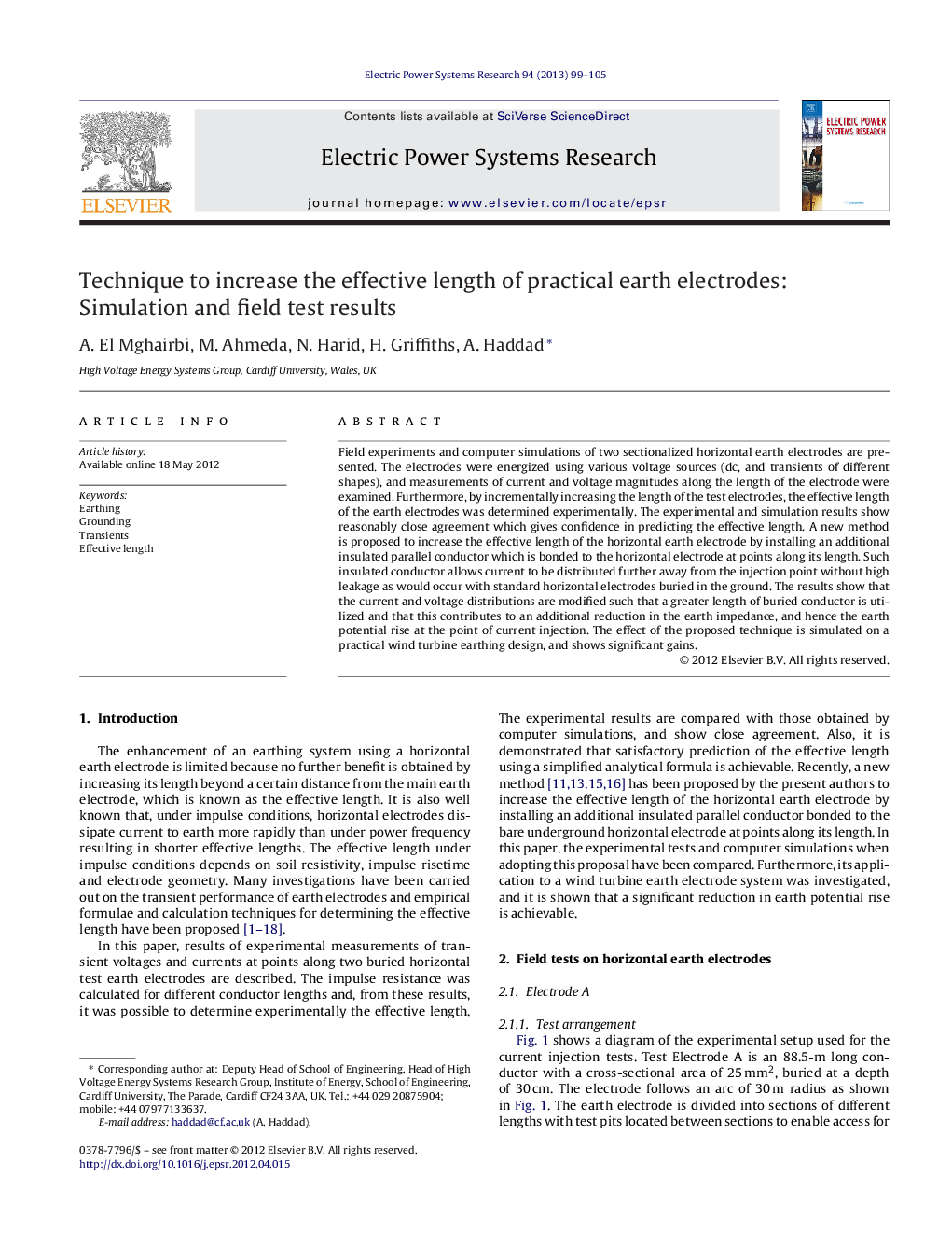| Article ID | Journal | Published Year | Pages | File Type |
|---|---|---|---|---|
| 705413 | Electric Power Systems Research | 2013 | 7 Pages |
Field experiments and computer simulations of two sectionalized horizontal earth electrodes are presented. The electrodes were energized using various voltage sources (dc, and transients of different shapes), and measurements of current and voltage magnitudes along the length of the electrode were examined. Furthermore, by incrementally increasing the length of the test electrodes, the effective length of the earth electrodes was determined experimentally. The experimental and simulation results show reasonably close agreement which gives confidence in predicting the effective length. A new method is proposed to increase the effective length of the horizontal earth electrode by installing an additional insulated parallel conductor which is bonded to the horizontal electrode at points along its length. Such insulated conductor allows current to be distributed further away from the injection point without high leakage as would occur with standard horizontal electrodes buried in the ground. The results show that the current and voltage distributions are modified such that a greater length of buried conductor is utilized and that this contributes to an additional reduction in the earth impedance, and hence the earth potential rise at the point of current injection. The effect of the proposed technique is simulated on a practical wind turbine earthing design, and shows significant gains.
► Tests were carried out on two horizontal earth electrodes under impulse energization. ► Current/voltage distributions examined and electrode effective lengths were determined. ► Computer simulations of the electrodes show close agreement with measured values. ► A newly proposed technique to extend effective length shows promise. ► Application of new technique to a windfarm is exemplified.
